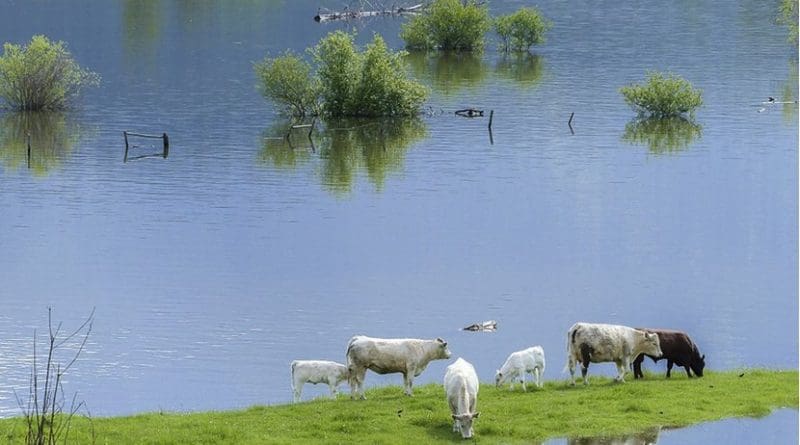Floods May Be Nearly As Important As Droughts For Future Carbon Accounting
Plants play an essential role in curbing climate change, absorbing about one-third of the carbon dioxide emitted from human activities and storing it in soil so it doesn’t become a heat-trapping gas. Extreme weather affects this ecosystem service, but when it comes to understanding carbon uptake, floods are studied far less than droughts – and they may be just as important, according to new research.
In a global analysis of vegetation over more than three decades, Stanford University researchers found that photosynthesis – the process by which plants take up carbon dioxide from the atmosphere – was primarily influenced by floods and heavy rainfall nearly as often as droughts in many locations. The paper, published in Environmental Research Letters, highlights the importance of incorporating plant responses to heavy rainfall in modeling vegetation dynamics and soil carbon storage in a warming world.
“These wet extremes have basically been ignored in this field and we’re showing that researchers need to rethink it when designing schemes for future carbon accounting,” said senior study author Alexandra Konings, an assistant professor of Earth system science in Stanford’s School of Earth, Energy & Environmental Sciences (Stanford Earth). “Specific regions might be much more important for flood impacts than previously thought.”
More photosynthesis in combination with other factors can enable greater amounts of carbon to be stored in the soil over the long term, according to the researchers. To estimate the presence of photosynthesis, they analyzed plant greenness according to publicly available satellite data from 1981 to 2015.
Because the field of carbon accounting is dominated by research on drought impacts, the co-authors were surprised to find that photosynthesis was affected by flooding so frequently – in about half the regions in the analysis. While drought is known to decrease photosynthesis, wet extremes can either decrease or accelerate the process.
“I think the drought side is probably something that many of us understand clearly because we can see soils drying out – we know that plants need water to be able to function normally,” said lead study author Caroline Famiglietti, a PhD student in Earth system science.
Using statistical analysis, the researchers divided the globe into regions and isolated periods during which the plants’ photosynthetic activity wouldn’t have resulted from other factors, such as temperature or sunlight changes. They then used several long-term soil moisture datasets to determine which locations were more sensitive to extreme wet events than to extreme dry events and found that many regions in central Mexico, eastern Africa and northern latitudes should be targeted for further investigation.
“Everything that is observed in this master dataset reflects the behavior of the broader climate system,” Famiglietti said. “This paper identified something surprising, but it didn’t answer all the questions we still have.”
In a warmer world, extreme weather is projected to become more intense, extensive and persistent, but the mechanisms controlling drought responses in plants are much better understood than extreme wet responses. The findings suggest an opportunity to address “a big component of the uncertainty in future climate change and its links to ecosystem carbon storage,” according to Konings.
“If we can better understand these processes, we can improve modeling and better prepare for the future,” Famiglietti said.

